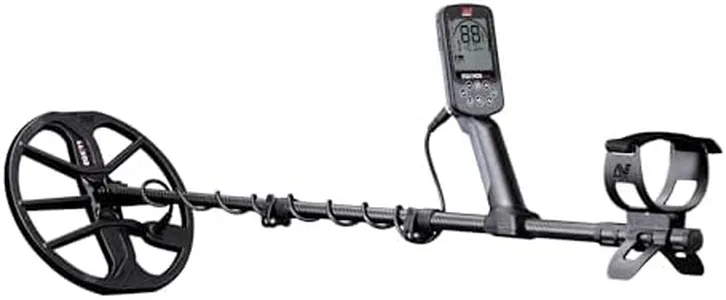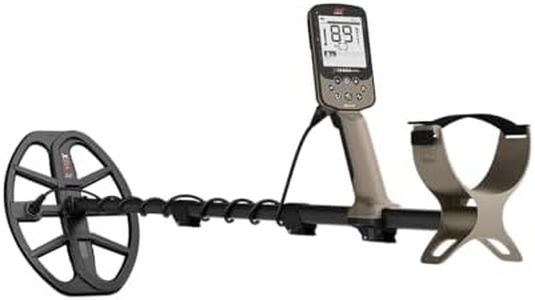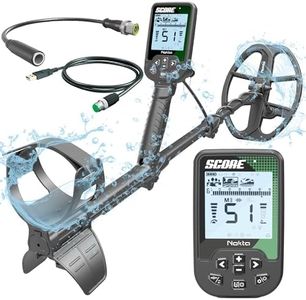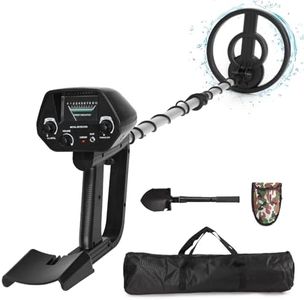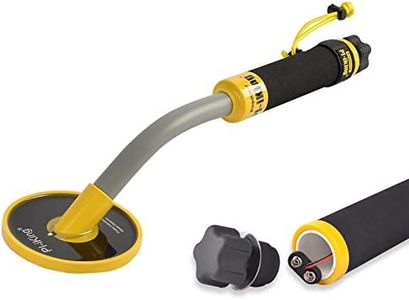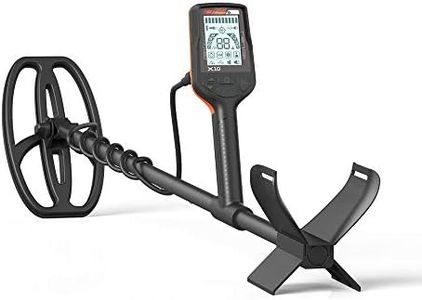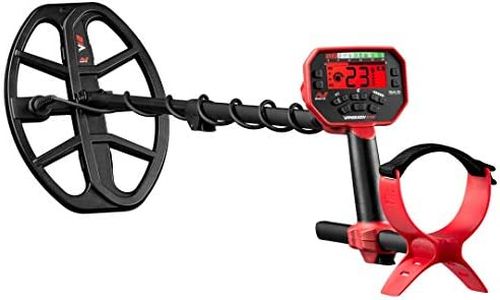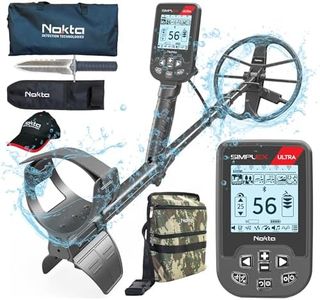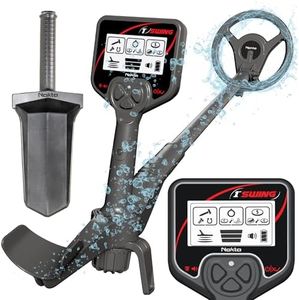We Use CookiesWe use cookies to enhance the security, performance,
functionality and for analytical and promotional activities. By continuing to browse this site you
are agreeing to our privacy policy
10 Best Underwater Metal Detector
From leading brands and best sellers available on the web.Buying Guide for the Best Underwater Metal Detector
Choosing an underwater metal detector involves thinking about where and how you plan to hunt for treasures. Whether you’re scouting shallow waters at the beach or diving deeper in lakes and rivers, the right model should feel comfortable, be reliable in water, and suit your style of detecting. Start by thinking about your typical use scenario, such as if you’re a casual beachcomber or a dedicated scuba diver. From there, understanding the main features will help you match the machine to your adventures, making sure it performs well, is comfortable to use, and stands up to the elements.Waterproof Depth RatingThis specification tells you how deep your metal detector can be fully submerged without getting damaged. Depth ratings can range from as shallow as a meter for splash-proof models meant for shorelines, up to 60 meters or more for detectors built for scuba diving. If you only plan to search in ankle-deep water or shorelines, a lower depth rating is fine. But if you expect to snorkel or dive, you'll need a detector rated well beyond your maximum diving depth to ensure safety and reliable operation.
Type of Technology (VLF vs. PI)Underwater metal detectors typically use either VLF (Very Low Frequency) or PI (Pulse Induction) technology. VLF detectors are more sensitive to small jewelry and can discriminate between different types of metals, making them suitable for freshwater or saltwater with less mineralization. PI detectors perform better in salty, mineral-rich environments like ocean beaches since they handle ground mineralization well but are less able to distinguish iron from other metals. If you plan to search mostly in freshwater lakes, a sensitive VLF may be for you; if you’re hitting the beach or diving in the sea, go for a PI detector.
Discrimination CapabilityThis feature allows the detector to tell the difference between various types of metals, such as rejecting bottle caps or nails while picking up coins or rings. Some detectors offer adjustable discrimination, letting you fine-tune what you want to find. If you’re searching in trashy areas with lots of iron junk, strong discrimination is very useful. However, if you want to find all types of metal including relics, you might prefer a machine with little or no discrimination. Match the detector’s discrimination capability to what you want to dig up.
Sensitivity SettingsSensitivity refers to how well the detector can identify small or deep targets. Most detectors allow you to adjust sensitivity: higher settings can find smaller or deeper objects but may also lead to more false signals from minerals in the water. If you’re after tiny gold pieces or coins and hunting in stable conditions, higher sensitivity is helpful. If you're in highly mineralized areas or finding too many false signals, lower sensitivity may be better. Balance this setting based on your search area and the size of items you want to find.
Weight and ErgonomicsSince you'll be swinging the detector and possibly wearing it for long periods, pay attention to its weight and how comfortable it feels. Detectors designed for underwater use often have configurations for easy handling in water, with adjustable shafts and balanced designs. If you’re snorkeling or wading, lightweight models with comfortable grips are easier to manage. For deeper dives, look for harness compatibility or neutral buoyancy so it doesn’t float or sink away. Your comfort and handling should guide you here—try to imagine using it for an hour or two in your typical conditions.
Audio and Visual Target IndicatorsUnderwater, you can’t always count on hearing clear beeps, so look at what kind of target alert system the detector uses. Some use waterproof headphones, others vibrate the handle, and some offer LED lights to indicate a find. If you plan to use the detector with a mask and snorkel or while scuba diving, non-audio signals like vibrations or lights can be invaluable. Pick a model that communicates in a way you’ll easily notice given your underwater environment.
